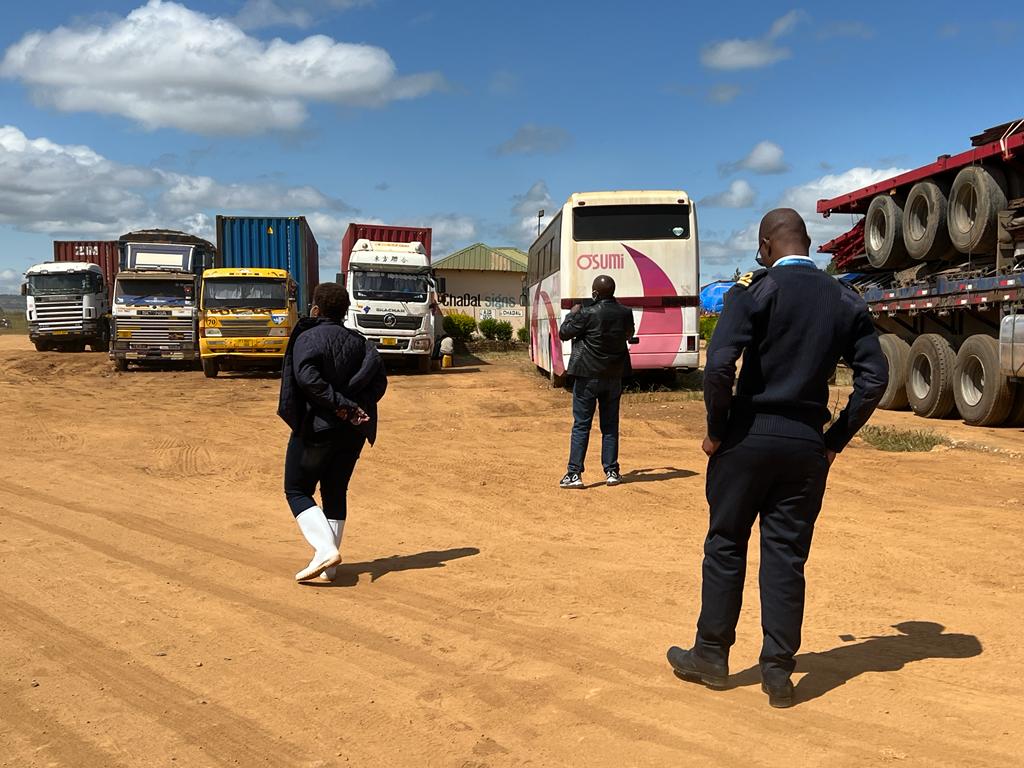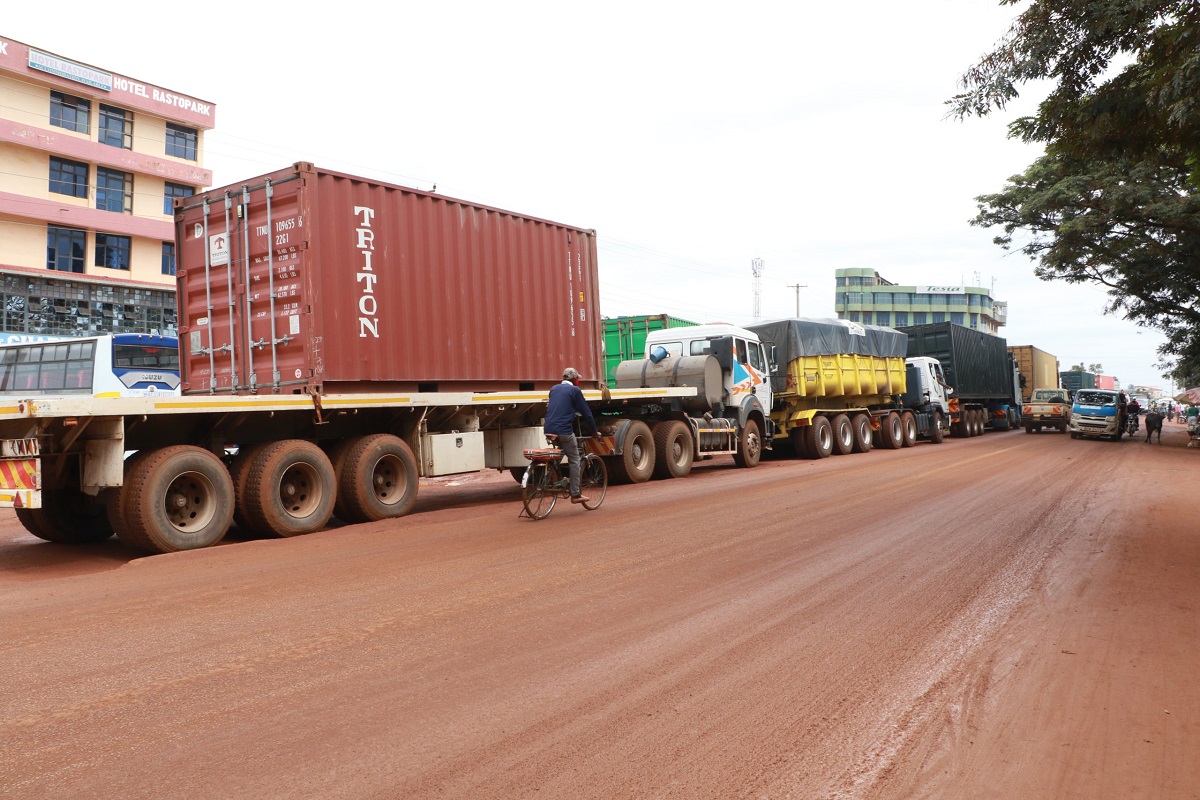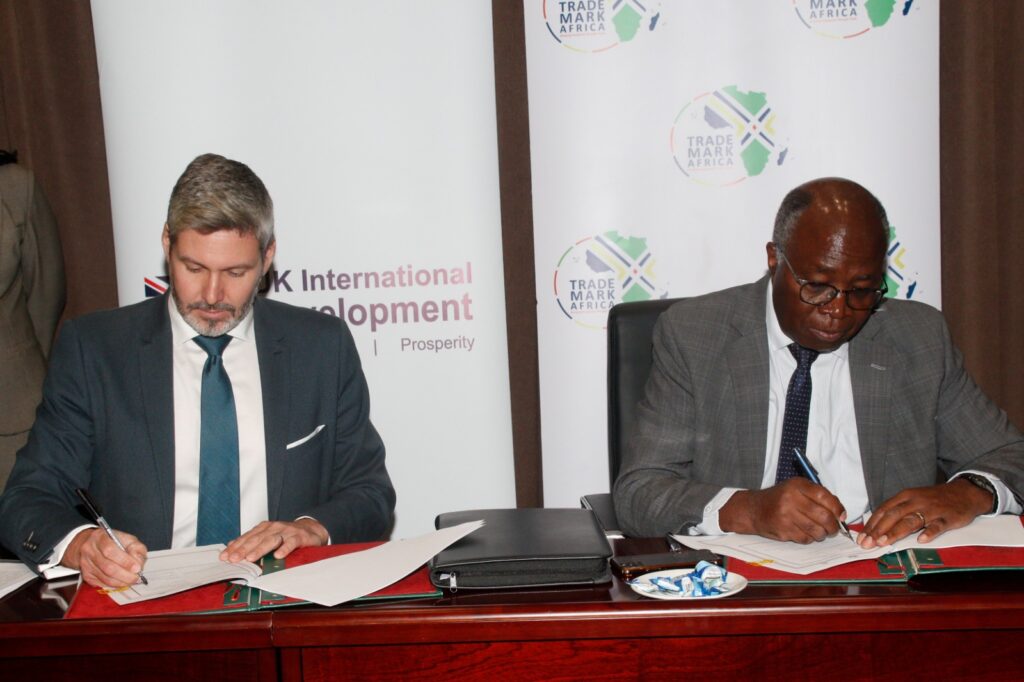- Zambia-Tanzania Trade Route expansion enjoys the support of senior government, diplomatic, and development sector officials.
- The Nakonde/Tunduma border is one of the busiest entry/exit points for cargo in and out of Zambia.
- The design reviews for Nakonde OSBP were finalised over the last year
The Government of Zambia and TradeMark Africa (TMA) have entered into a Partner Support Agreement (PSA) to upgrade the Nakonde One Stop Border Post, a key Zambia-Tanzania Trade Route.
Funded by the UK government, the $7.7 million (ZMK 197 million) project will improve the flow of goods and people along the Dar es Salaam Corridor, promising to streamline operations and reduce cargo clearance times by more than 100 per cent on both sides of the border.
Clearing cargo trucks crossing the border takes more than two days, leading to significant business delays and losses.
Zambia’s Finance Minister, Situmbeko Musokotwane, and TMA’s CEO, David Beer, launched the programme. Musokotwane highlighted the project’s potential to upgrade infrastructure, decrease congestion, and improve regional trade flows.
“This agreement paves the way for transformative interventions aimed at upgrading infrastructure at Nakonde OSBP, improve border efficiency, reduce congestion and enhance trade facilitation. By improving infrastructure at the Nakonde OSBP, we aim to enhance clearance efficiency along the Dar-es-Salaam corridor, reduce time taken to clear both cargo and passengers and ultimately facilitate trade flows,” said the minister.
The Nakonde Border Post will see improvements, including upgrading road infrastructure within the OSBP and truck parking yard, constructing additional office buildings and warehouses, and installing a modern cargo scanner. The initiative also includes digitising clearance processes and installing smart gates to cut dwelling times for cargo trucks from the current average of 55 hours.

TMA CEO, David Beer, underscored the impact of efficient OSBPs on reducing trade times and costs and enhancing regional integration. Based on TMA’s experience in East Africa, Beer expressed confidence in the project’s success and contribution to a more connected Africa.
“There is no denying the effect that integrated, fully operational and efficient OSBPs can have in reducing the time and cost of trade, thereby stimulating cross-border prosperity. Our experience in establishing similar border facilities across East Africa has shown us that such efforts can reduce clearance time by an average of 70 percent,” said beer.
The British High Commissioner to Zambia, Nicholas Woolley, expressed his delight at the UK Government’s new partnership with Zambia and TradeMark Africa to upgrade the strategic trade frontier between Zambia and Tanzania.
Read Also: Why Tanzania’s coffee beans are making a splash on the global stage
Why The Zambia-Tanzania Trade Route is key
He mentioned that the Nakonde/Tunduma border is one of the busiest entry/exit points for cargo in and out of Zambia, crucial for facilitating international trade and the transportation of essential goods such as food, fuel, and fertilizers. He added that the UK’s support would involve funding for installing a new cargo scanner and associated road and customs infrastructure in Nakonde.
He said this would lead to quicker cargo scans and reduce the time spent by lorries at the border. He also noted that increased border efficiency would enhance regional integration, attract investment, boost cross-border trade, and create jobs.
In 2021, the UK funded the upgrade of the Tunduma side of the border to a One-Stop Border post, including a state-of-the-art cargo scanner.
This initiative is part of TradeMark Africa’s broader efforts to facilitate trade across the continent. With over 15 OSBPs established in East Africa, resulting in an average 70 per cent reduction in border crossing times per time and traffic evaluation surveys conducted on these border posts, the Nakonde project is set to deepen trade ties between Zambia and its neighbours, leveraging Zambia’s strategic position as a land-linked country reliant on regional ports for its international trade.

He explained that borders within Africa have acted as key choke points for trade and are extremely expensive to develop and maintain. Onyango highlighted that long delays at the borders due to inadequate infrastructure and inefficiencies in processing goods and passenger traffic have led to significant time and cost being added to formal and informal trade between African countries.
He emphasized that the penalties are most stringent for landlocked countries, as the time delays directly translate into higher consumer prices for food and other imported commodities. The project enjoys the support of various stakeholders, including senior government, diplomatic, and development sector officials.











